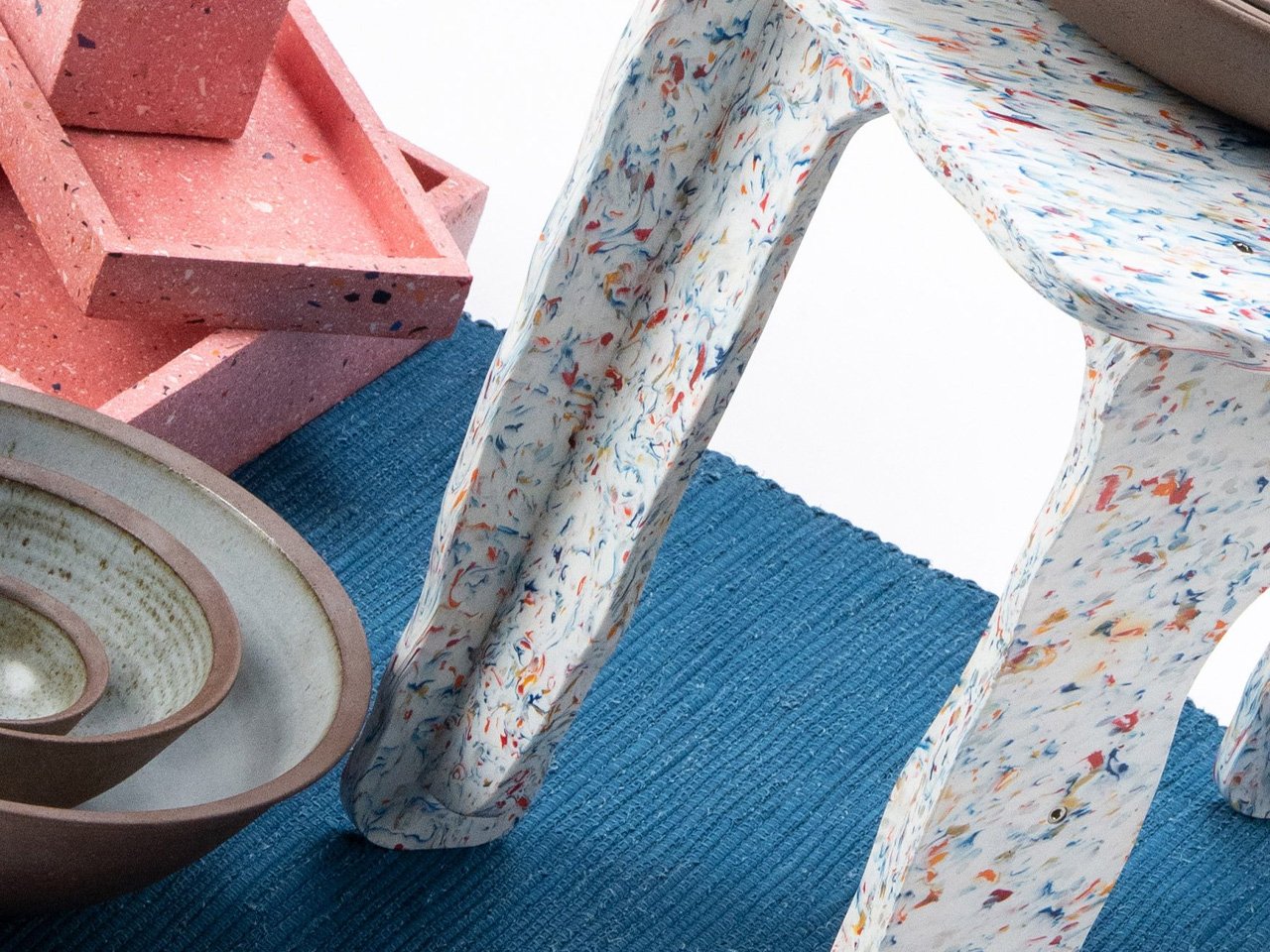British designer Max Lamb has done something pretty cool at Bali’s Desa Potato Head hotel. He’s taken their actual trash, old bed sheets, used cooking oil, broken glass, leftover oyster shells, and somehow made furniture that looks like it belongs in a design magazine. The whole thing took five years to figure out, which makes sense when you think about it. You can’t just decide to make chairs out of garbage and expect it to work overnight.
The best part is how these pieces don’t try to hide what they used to be. Those compressed hotel linens in the stools have this incredible layered texture that tells the whole story. The cooking oil creates these wild organic patterns on trays that you’d never see in regular furniture. It’s the opposite of what most sustainable design does—instead of pretending to be something else, each piece celebrates being made from waste. Your friends will ask questions, and you’ll actually have interesting answers.
Designer: Max Lamb
Lamb worked directly with Balinese craftspeople, which turned out to be crucial. He didn’t just show up with sketches and expect them to figure it out. They spent time together developing techniques that work with these weird materials. The furniture feels genuinely handmade in the best way—you can see the human touch in every piece. Plus, it’s keeping traditional skills alive while creating real jobs, which feels good when you’re buying something.
What’s really amazing is that this stuff truly works as furniture. The chairs are comfortable. The tables are sturdy. The lamps give off good light. Lamb made sure that these pieces don’t just look interesting; they hold up to daily use. The waste materials perform better than you’d expect, often lasting longer than conventional options while giving you textures and colors you literally cannot find anywhere else.
The whole process is refreshingly honest. When you visit Potato Head, you can see the raw materials sitting right next to the finished pieces. You understand exactly what went into making each object, which is rare in furniture shopping. The hotel setting helps too; you get to see how these pieces work in real spaces before deciding if you want to live with them. They sell online now, but seeing them in person drives home how special they are.
It never feels like Lamb is lecturing you about saving the planet through the collection. The sustainability angle comes naturally from the design being good, not the other way around. He managed to develop 14 different products in just 12 months once they got the process down, proving this approach can scale up. Other designers are probably looking at this, thinking about their waste streams differently. But honestly, the real win here is that Lamb created objects people will want to own, regardless of the environmental story. That’s how you change things: make sustainable design so good that the sustainability part becomes secondary to just wanting beautiful, functional objects in your space.
The post Hotel Waste Finds New Life As Sustainable & Trendy-Looking Furniture In Bali first appeared on Yanko Design.

